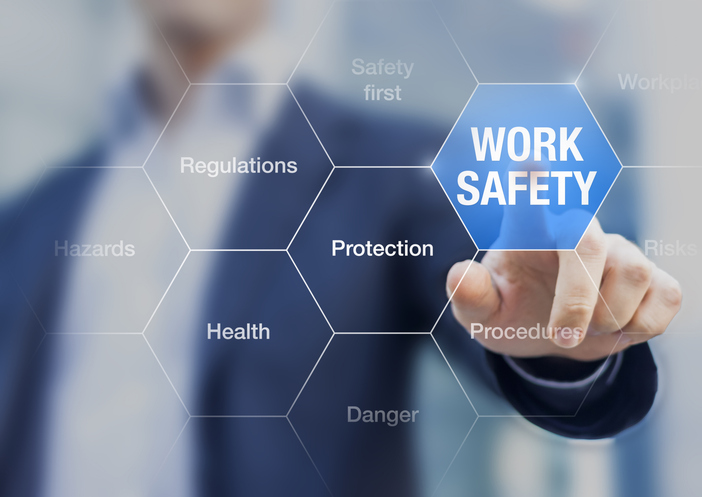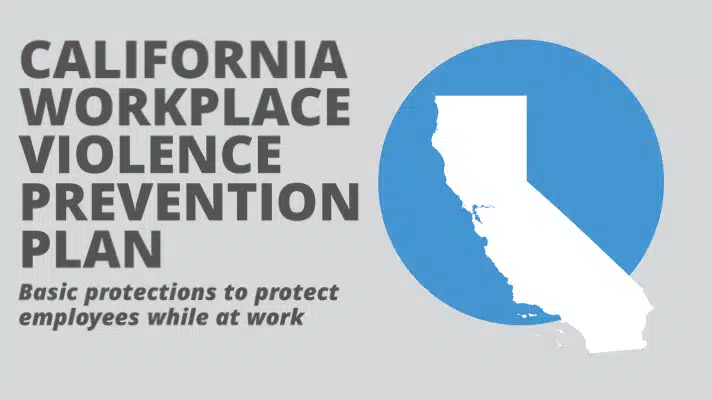Just how to Assess the Efficiency of Your California Workplace Violence Prevention Initiatives
Just how to Assess the Efficiency of Your California Workplace Violence Prevention Initiatives
Blog Article
Assessing the Impact of Workplace Culture on the Success of Violence Prevention Efforts and Worker Health
The intersection of workplace culture, violence prevention initiatives, and worker wellness warrants cautious assessment, as these components collectively influence organizational success. A culture that prioritizes open communication and psychological security can equip workers to recognize and report potential threats, therefore promoting an atmosphere favorable to both psychological health and wellness and efficient physical violence prevention strategies. Nonetheless, the nuances of just how these factors interact stay complicated and diverse. Understanding the details systems at play can reveal crucial understandings that might inform future campaigns and drive significant adjustment within organizations. What underlying characteristics may be influencing these end results?
Recognizing Work Environment Culture
Often, workplace culture works as the structure for employee communications and overall business actions. It encompasses the common values, beliefs, and techniques that shape the setting in which employees operate. A favorable workplace society fosters partnership, regard, and open communication, while an adverse culture may reproduce stress, question, and hostility. Recognizing workplace culture is crucial for companies aiming to execute efficient physical violence prevention strategies.

Organizations need to examine their existing work environment society to determine locations for improvement. This evaluation can entail studies, focus groups, or one-on-one discussions. By recognizing the cultural dynamics at play, companies can execute targeted interventions that promote a safer and a lot more respectful work environment, ultimately decreasing the risk of violence in the workplace.
Duty of Employee Wellness
A positive office culture not just influences organizational habits yet additionally dramatically impacts staff member health. When staff members feel valued and appreciated, their overall work contentment boosts, bring about improved psychological and mental wellness. This, in turn, cultivates a sense of belonging and loyalty, which is necessary for long-term interaction and performance.
Furthermore, an encouraging social environment promotes open interaction, enabling workers to seek and reveal problems help without concern of preconception. This visibility is vital in dealing with problems connected to stress, exhaustion, and social disputes, which can negatively influence both specific well-being and organizational harmony.
In addition, organizations that prioritize worker wellness usually see reduced absenteeism and turn over prices. Healthy and balanced employees are more resilient and better furnished to deal with workplace challenges, adding to a much more steady and efficient workforce.
Investing in worker health with efforts such as health cares, mental health and wellness resources, and versatile working plans can create a positive comments loop, improving both specific gratification and cumulative business success (california workplace violence prevention). Ultimately, prioritizing employee wellness is not merely a moral imperative; it is a strategic technique that benefits the whole organization
Violence Avoidance Strategies
Carrying out reliable violence prevention techniques is crucial for preserving a healthy and balanced and risk-free office setting. Organizations must adopt an extensive strategy that consists of policy development, employee training, and proactive communication. Developing clear workplace violence policies is the primary step, guaranteeing that all employees understand acceptable behavior and the consequences of offenses.
Educating programs ought to be developed to enlighten staff members concerning acknowledging indication of possible violence, problem resolution methods, and emergency situation reaction treatments. Regular drills and simulations can boost preparedness, promoting a culture of recognition and liability.
Additionally, fostering open interaction networks motivates workers to report worries without anxiety of revenge. This can be promoted via confidential coverage systems or normal comments sessions. Promoting a supportive office society that values respect and inclusivity can considerably minimize the risk of violence.
Organizations must additionally involve in regular assessments of their workplace culture and violence avoidance approaches, adjusting them to evolving requirements. By focusing on these techniques, business not just secure their staff members but also enhance overall wellness, eventually adding to an extra productive work atmosphere.
Determining Social Effect
Gauging the impact of workplace culture click over here on violence avoidance initiatives is crucial for recognizing the effectiveness of existing techniques and recognizing areas for renovation - california workplace violence prevention. To accomplish this, organizations have to utilize a multifaceted technique that incorporates quantitative and qualitative methods. Surveys and analyses can collect information on employee understandings of office support, safety, and inclusivity systems, while event reports give concrete evidence of violence events and their context within the organizational culture
In addition, focus teams and meetings can expose deeper understandings right into workers' mindsets, experiences, and ideas bordering violence avoidance efforts. Assessing this qualitative data assists organizations to identify social strengths and weak points that may either promote or impede reliable prevention approaches. Benchmarking versus industry criteria allows for comparative evaluation, helping organizations determine their performance loved one to peers.

Developing Encouraging Environments
Regularly promoting an encouraging atmosphere within the office is crucial for efficient violence avoidance. Such settings empower staff members to communicate freely concerning their experiences and issues, thereby determining potential problems prior to they intensify. A society of support enhances trust fund among employee, motivating cooperation and proactive analytical.
To develop a helpful environment, companies need to prioritize training programs that focus on dispute resolution, psychological knowledge, and active listening. These skills outfit staff members to handle social relationships constructively, reducing the possibility of misconceptions that could lead to violence - california workplace violence prevention. Additionally, executing mentorship programs can supply workers with support and confidence, adding to their total health
Leadership plays an important function in forming a helpful work environment culture. By modeling compassionate habits and showing a dedication to worker well-being, leaders established a tone that motivates others to follow suit. Routine comments mechanisms, such as confidential surveys, can additionally help evaluate staff member belief and highlight areas for improvement.
Inevitably, a supportive environment not just minimizes the danger of physical violence however also boosts worker spirits, task fulfillment, and important source productivity, enhancing the organization's dedication to promoting a successful and safe work environment.
Conclusion
A favorable work environment society substantially influences both physical violence prevention initiatives and worker health. By fostering open interaction and encouraging the reporting of problems, organizations can improve psychological health and wellness and work satisfaction amongst staff members. Moreover, an encouraging culture enhances the performance of violence prevention approaches by resolving and promoting the prompt recognition of indication. Eventually, cultivating such an atmosphere offers as an important foundation for successful treatments and adds to the general success of the company.
The junction of workplace culture, violence avoidance initiatives, and employee well-being warrants cautious exam, as these have a peek at this site components collectively influence business success. A culture that prioritizes open interaction and mental safety and security can equip staff members to determine and report prospective risks, thereby cultivating a setting favorable to both mental health and effective physical violence avoidance methods.A positive workplace culture not just affects organizational habits but likewise considerably effects employee health. Surveys and assessments can gather data on worker perceptions of office support, inclusivity, and safety and security systems, while case reports provide concrete proof of violence incidents and their context within the organizational culture.
A positive work environment society significantly affects both physical violence prevention efforts and employee health.
Report this page